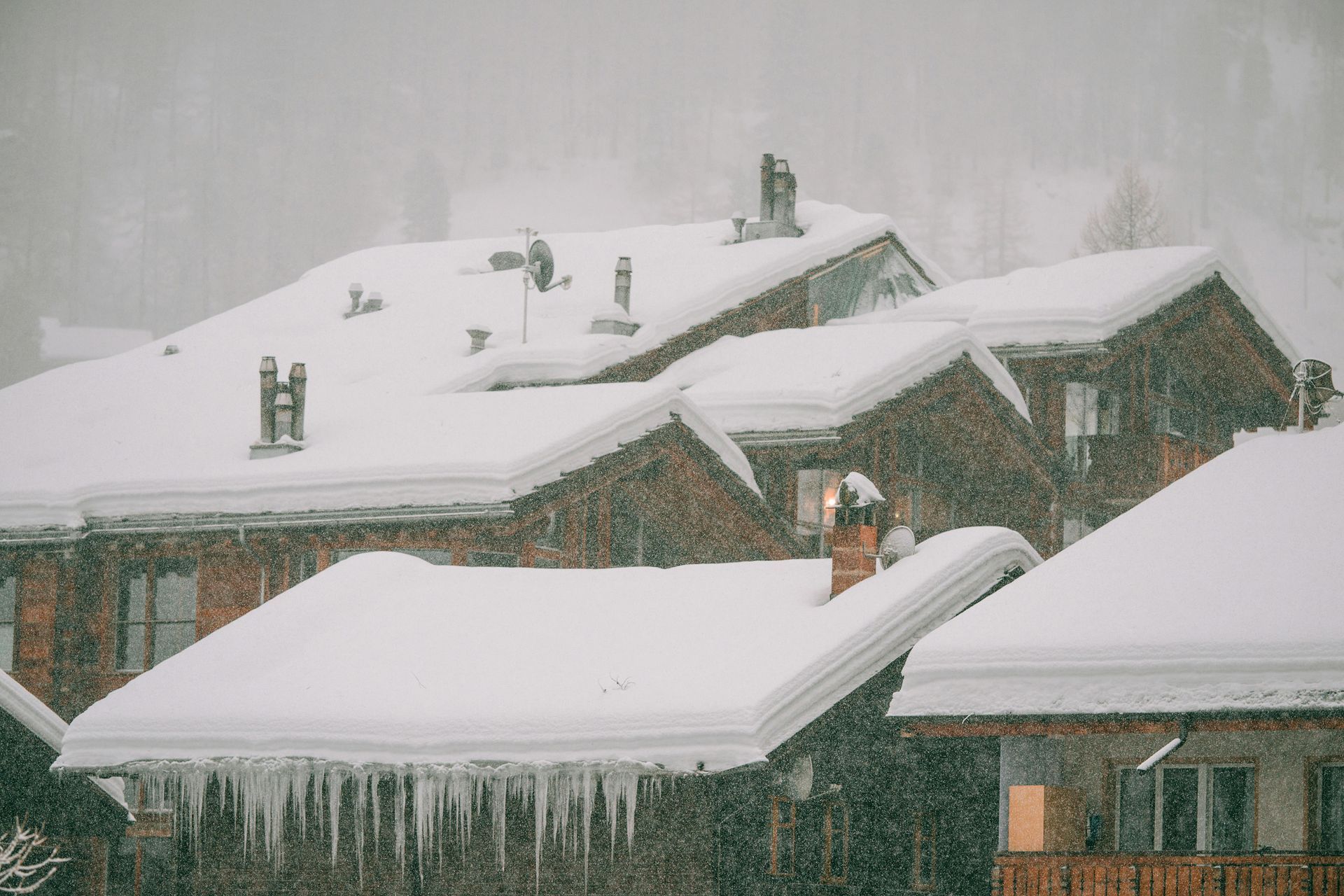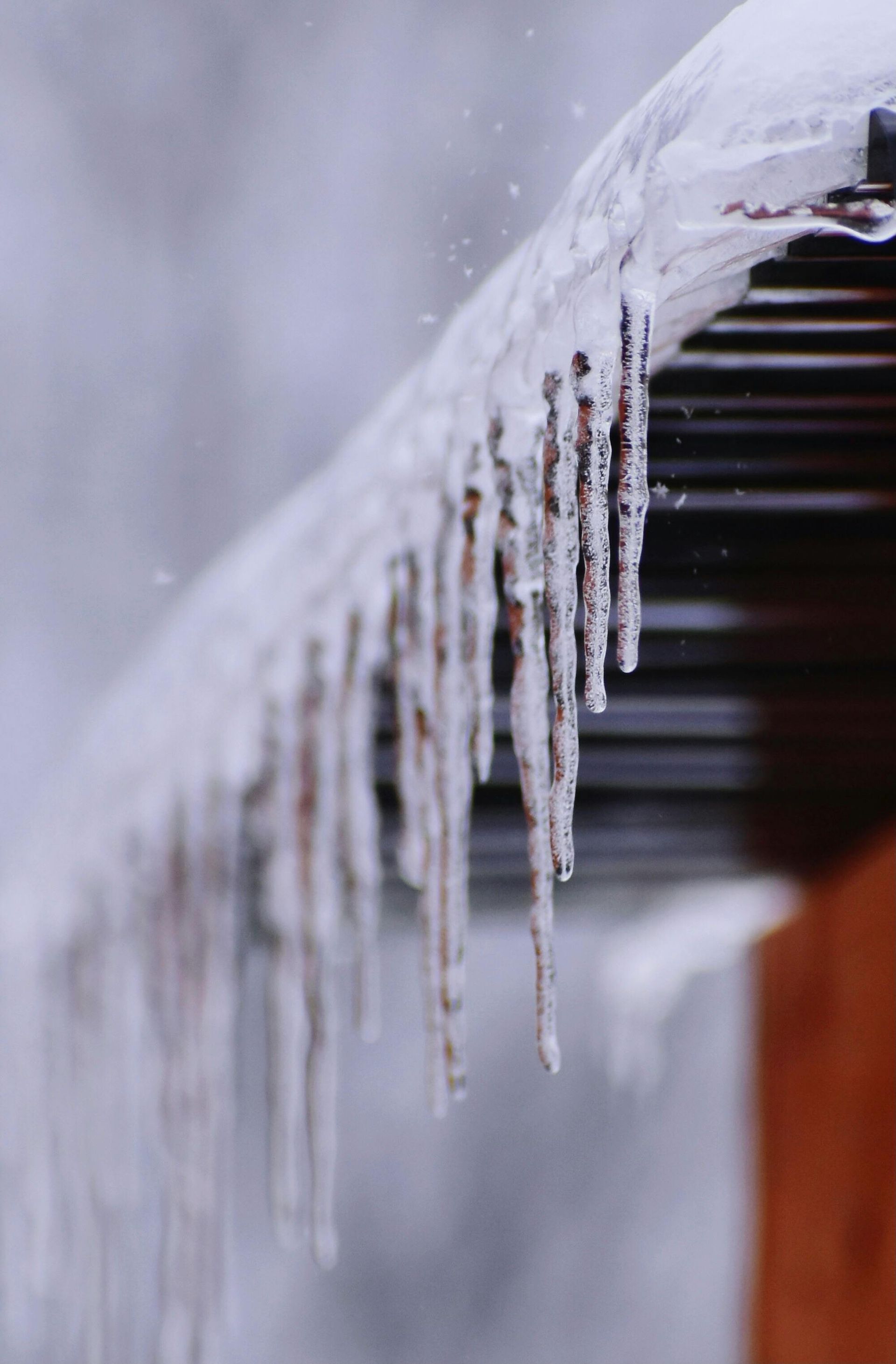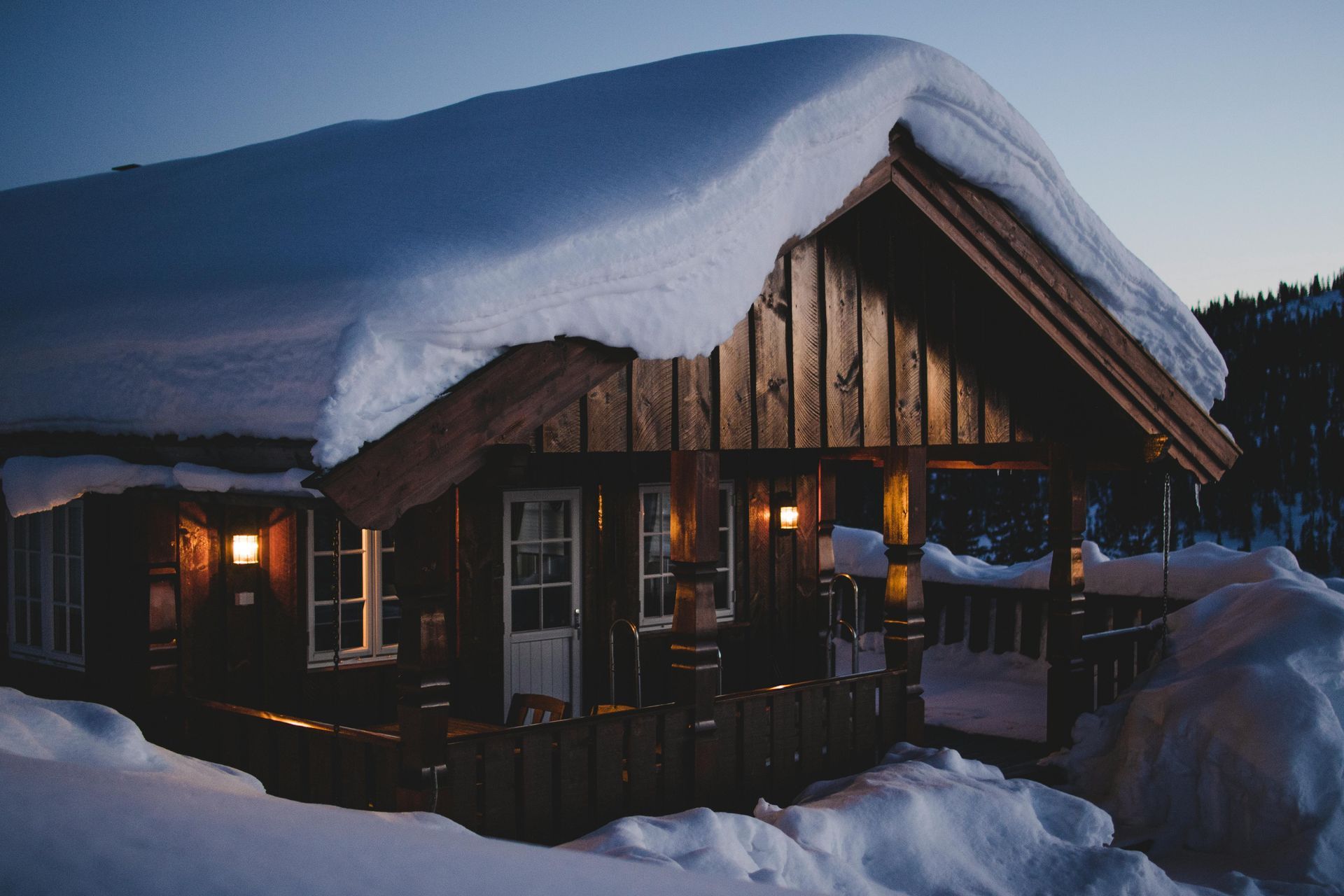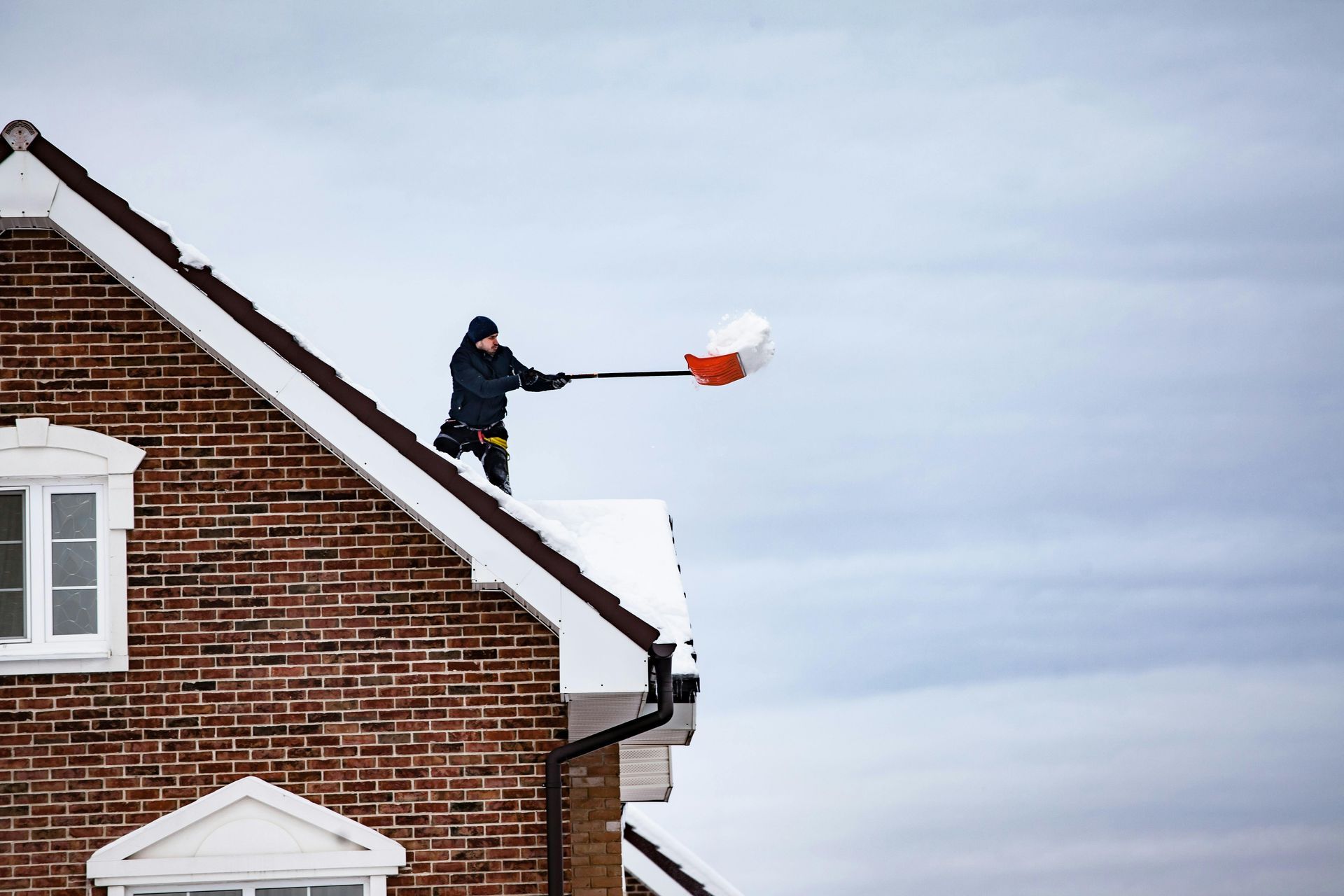Roof Snow Removal Services in Washington DC
Winter weather in Washington DC brings significant challenges for homeowners and businesses alike, with snow accumulation on roofs posing serious structural risks. At Washington DC Roofing Company, we provide comprehensive roof snow removal services to protect your property from potential damage caused by excessive snow weight. Our professional team uses specialized equipment and proven techniques to safely remove snow from all types of roofs, preventing ice dams, leaks, and structural concerns before they become costly problems.
The Mid-Atlantic region's winter weather pattern of freezing temperatures followed by partial thaws creates ideal conditions for dangerous ice dam formation and concentrated structural loads. Just one cubic foot of wet snow can weigh over 20 pounds, meaning even moderate accumulation can place thousands of pounds of excess weight on your roofing system.
Our certified roof safety technicians approach each removal with methodical precision, utilizing specialized equipment including roof rakes, snow shovels designed for roofing materials, and protective gear that prevents damage to underlying shingles, membranes, or flashing. We maintain careful clearance zones around vents, chimneys, skylights, and other vulnerable roof penetrations.
For commercial properties, we implement strategic removal patterns that distribute weight reduction evenly across load-bearing structures. For residential properties, we pay particular attention to eave areas where ice dams typically form, ensuring proper drainage channels remain clear throughout the winter season.

What Is Snow Load and Its Risks?
Aesthetics and Design
Choosing solar shingles significantly reduces your carbon footprint. A typical residential solar shingle system can eliminate 3-4 tons of carbon emissions annually, equivalent to planting about 100 trees each year.
Solar energy is a clean, renewable resource that doesn't produce greenhouse gases or air pollutants during operation. By harnessing the sun's power, you're reducing reliance on fossil fuels and contributing to cleaner air quality.
Snow load refers to the weight of accumulated snow on your roof structure. One cubic foot of fresh snow can weigh between 7-20 pounds, while compacted or wet snow can weigh up to 40-100 pounds per cubic foot. This substantial weight puts immense stress on your roof.
Most residential roofs are designed to withstand specific snow loads based on local building codes. However, when accumulation exceeds these design limits, serious structural problems may develop. Warning signs include:
- Visible sagging of roof sections
- Creaking or popping sounds from the attic
- Difficult-to-open doors or windows (indicating frame stress)
- Cracks appearing in interior drywall
We recommend professional snow removal when accumulation reaches 6-12 inches, depending on the snow's density and your roof's design specifications.

Ice Dams’ Impact on Roofs
Aesthetics and Design
Choosing solar shingles significantly reduces your carbon footprint. A typical residential solar shingle system can eliminate 3-4 tons of carbon emissions annually, equivalent to planting about 100 trees each year.
Solar energy is a clean, renewable resource that doesn't produce greenhouse gases or air pollutants during operation. By harnessing the sun's power, you're reducing reliance on fossil fuels and contributing to cleaner air quality.
Ice dams form when roof snow melts and refreezes at the eaves. This process begins when heat escapes from your home, warming the roof surface and melting the snow above. The meltwater flows downward until it reaches the colder eave area where it freezes.
As this cycle continues, a ridge of ice forms at the edge, creating a dam that prevents proper drainage. Water backs up behind these dams and can penetrate under shingles, causing:
- Water leakage into attics and walls
- Damaged insulation and reduced R-value
- Mold and mildew growth
- Rotted roof decking and structural components
Professional roof snow removal addresses both the snow load and prevents ice dam formation. We carefully remove snow while preserving your roofing materials, reducing winter damage risks significantly.

Our Snow Removal Services
Washington DC Roofing Company provides comprehensive roof snow removal solutions designed to protect your property during harsh winter conditions.
Assessment and Planning
We begin every snow removal project with a thorough assessment of your roof structure and snow accumulation. Our trained technicians visually inspect the entire roofing system to identify potential problem areas, measuring snow depth and weight to determine removal priorities.
Safety is our primary concern during the planning phase. We evaluate access points, nearby electrical lines, and surrounding property features to create a detailed removal strategy.
Our team considers weather forecasts to time our services appropriately. This prevents us from clearing snow just before another major storm, maximizing the effectiveness of our work.


Techniques and Tools Used for Effective Snow Removal
Our professional crew utilizes specialized equipment designed specifically for roof snow removal. This includes roof rakes with telescoping handles, plastic shovels that won't damage roofing materials, and commercial-grade blowers for powdery snow conditions.
For ice dam removal, we employ steam equipment that safely melts ice without harming your roof structure. This prevents water infiltration and potential interior damage.
We implement a systematic removal pattern, working from the edges inward to prevent uneven weight distribution. This methodical approach maintains structural balance throughout the removal process.
Why Choose Us
When winter storms hit the capital region, you need a reliable partner who understands the unique challenges of roof snow removal. Washington DC Roofing Company combines professional expertise with dedicated customer service to protect your property.
Proper membrane installation significantly extends roof lifespan by providing superior waterproofing protection. We carefully seal all joints and connections to prevent water infiltration that can damage structural components.
Energy efficiency improvements come standard with many membrane options. Reflective membranes can reduce cooling costs by up to 30% during summer months by minimizing heat absorption.
Low maintenance requirements make membrane roofing an economical long-term investment. Most systems need only bi-annual inspections to ensure optimal performance.
Installation can often be completed without disrupting building operations. Our experienced teams work efficiently to minimize noise and interference with your daily activities.
Expertise in Snow Removal
At Washington DC Roofing Company, we employ highly trained professionals who understand the structural complexities of different roof types. Our crews are certified in safety protocols and use specialized equipment designed specifically for roof snow removal operations.
We recognize that improper snow removal techniques can damage roofing materials. That's why our teams follow manufacturer-recommended practices to protect your roofing investment while eliminating dangerous snow loads.
Commitment to Customer Satisfaction
We pride ourselves on clear communication throughout the snow removal process. From initial assessment to project completion, our team keeps you informed about what to expect and when to expect it.
Our services are backed by comprehensive insurance coverage. This protection gives our clients peace of mind knowing that their property is fully protected during all snow removal operations.
Preventative Maintenance Programs
We offer specialized preventative maintenance programs that help minimize snow-related emergencies. These customized plans include pre-winter inspections to identify potential problem areas before they become costly repairs.
Our maintenance packages can include installation of snow guards and other prevention systems. These features help manage snow accumulation and reduce the frequency of emergency removals.
FAQs
TPO roofing installations come with many common questions from our customers. We've gathered the most important information about costs, durability, brands, and maintenance to help you make informed decisions.
What are the factors influencing the cost of a TPO roof installation?
Several key elements affect TPO roofing costs. The size of your roof is the primary factor, as larger areas require more materials and labor.
The thickness of the TPO membrane impacts pricing significantly. We offer options ranging from 45 mil to 80 mil thickness, with thicker membranes costing more but providing enhanced durability.
Your roof's complexity matters too. Buildings with multiple penetrations, HVAC units, or unusual shapes require more detail work and flashing.
Accessibility affects labor costs. If your roof is difficult to reach or requires special equipment, this will increase the installation price.
How long does a TPO roof typically last under normal weather conditions?
TPO roofs installed by Washington DC Roofing Company typically last 20-30 years with proper maintenance. This lifespan depends on several factors including membrane thickness and local climate conditions.
The quality of installation significantly impacts longevity. Our certified installation team ensures all seams are properly welded and details are correctly finished.
Modern TPO formulations have improved UV and heat resistance compared to earlier generations. This enhancement helps maintain reflectivity and structural integrity over time.
Regular inspections can help identify and address small issues before they compromise the roof's lifespan.
Which TPO roofing brand shows the highest performance and reliability?
We primarily install GAF and Firestone TPO systems due to their consistent performance records and extensive warranties. These manufacturers have refined their formulations over decades.
GAF EverGuard TPO offers excellent heat and UV resistance with their advanced material science. Their products perform exceptionally well in Washington DC's varying climate conditions.
Firestone UltraPly TPO provides superior puncture resistance and flexibility, maintaining performance through seasonal temperature changes. Their seam strength is among the industry's best.
Both brands offer comprehensive warranty options that can extend up to 30 years when installed by certified contractors like us.
Are there any notable drawbacks when using TPO roofing for commercial buildings?
Installation quality is critical with TPO systems. Poorly welded seams can lead to leaks and premature failure, which is why we invest in ongoing training for our installation teams.
Some older TPO formulations had issues with premature aging and cracking. Today's improved materials have largely resolved these concerns, but choosing a quality manufacturer remains important.
TPO can be punctured by sharp objects, making regular roof inspections necessary. We recommend establishing maintenance protocols after installation.
While highly energy efficient, TPO's initial cost may be higher than some traditional roofing systems, though this is typically offset by energy savings over time.
Can a TPO roof be installed over an existing roofing system, and what are the considerations?
Yes, in many cases we can install TPO over existing roofing, potentially saving on removal costs and reducing landfill waste. This approach is called a "recover" installation.
The existing roof must be structurally sound and relatively dry. We conduct moisture scanning to detect any trapped water that could compromise the new system.
Building codes typically limit commercial buildings to two roof layers. We'll verify local regulations and assess your current roofing situation during consultation.
Proper preparation may include adding recovery board insulation to create a smooth, compatible surface for the new TPO membrane attachment.
Tell Us About Your Roofing Project
Contact Us
Our Newsletter
We will get back to you as soon as possible.
Please try again later.
Subscribe For Newsletter
All Rights Reserved | Washington DC Roofing Company
